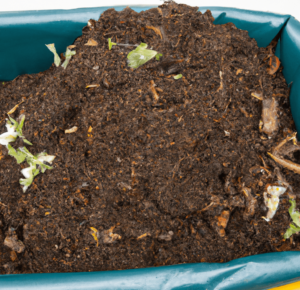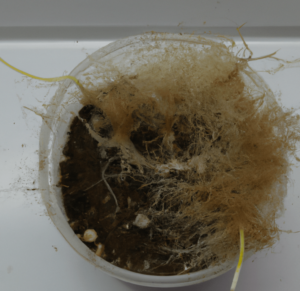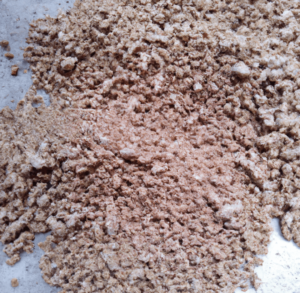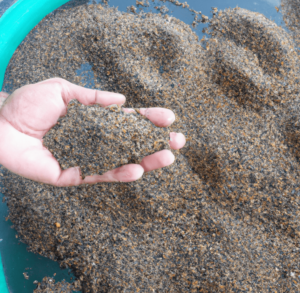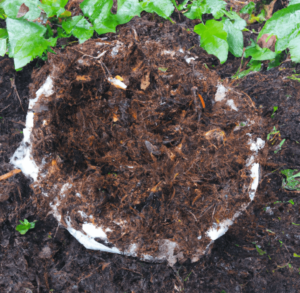The role of micronutrients in fertilization is essential. Micronutrients are needed in lesser levels compared to macronutrients like potassium, phosphorus, and nitrogen, which are needed in larger proportions. Micronutrients like zinc, iron, and copper, despite their small amounts, are crucial for the development of crops and their capacity to yield a plentiful harvest. If you want to learn more about micronutrients in fertilizers, this is the article for you.
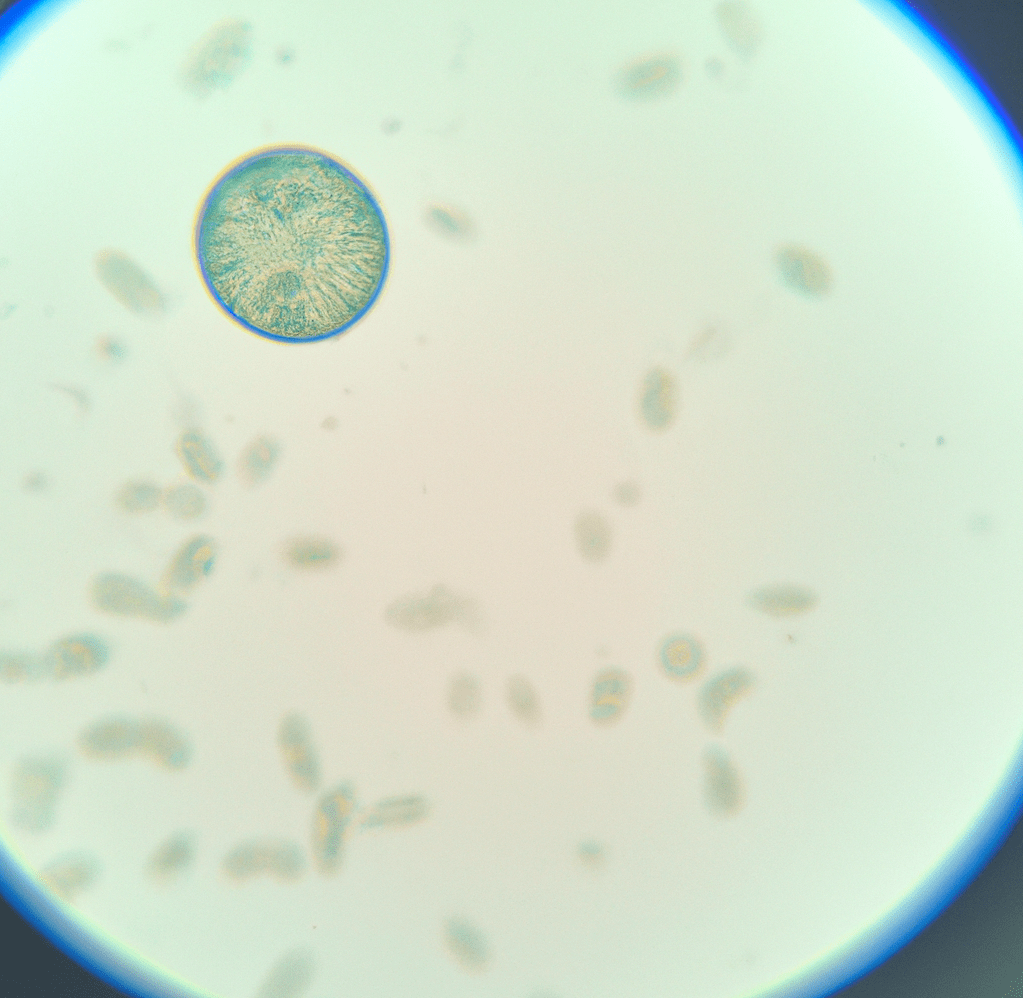
Types of Micronutrients
Micronutrients are necessary substances that humans, animals, and plants all need in trace amounts to maintain good health and nutrition. They are essential for several physiological functions, such as cell division, metabolism, and energy production. Some examples of vital micronutrients include the following:
- Boron supports the growth of robust cell walls and root systems in plants
- Enzyme activation, energy production, and growth regulation are all impacted by copper
- Iron is necessary for the production of red blood cells in mammals and plants, respectively
- Manganese is a component of photosynthesis and a factor in seed development
- Molybdenum aids in the metabolism of nitrogen and nitrogen-fixing in plants
- Zinc plays a role in the growth of roots, stems, and leaves in plants
- Phosphorus is essential for the storage and transport of energy in cells as well as the production of DNA and RNA
The role of micronutrients in fertilization is vital for cell health and function, soil health, crop development and yield, and the preservation of overall health in both people and animals.
Boron
When you’re learning about the role of micronutrients in fertilization, you’ll read about an essential element that is critical for the growth and development of plants: boron. Even though it is only needed in small amounts, boron is crucial for plants to operate properly, and a deficiency can cause stunted growth, lower yields, and lower-quality food.
Boron is frequently supplied to crops via foliar and soil spraying, similar to how zinc and iron are. Farmers that plant corn should be aware that this crop is particularly sensitive to boron deficiency and that boron should be included in their micronutrient management strategy.
Farmers may guarantee that their crops receive the required quantities of this crucial micronutrient for optimal growth and development by adding the appropriate amount of boron to the soil as they reap the benefits of understanding and choosing the right fertilizers.
Copper
Copper is a key micronutrient that is needed for plant development and fertilization. As you learn more about the role of micronutrients in fertilization, you’ll learn that copper’s engaged in a number of physiological activities, including the generation of energy, the implantation of chlorophyll, and the avoidance of oxidative damage.
While copper is only needed in trace amounts, similar to other minerals, a deficit can cause stunted growth, decreased fertility, and yellowing of the leaves. It’s crucial to constantly test the soil for copper levels and to modify it as necessary using fertilization or foliar applications. In addition to helping plants grow, copper is beneficial for human health because it aids in the absorption of folate, a mineral that is essential for fetal development.
Iron
Another essential micronutrient that is crucial to the growth and development of crops is iron. As we dive deeper into the role of micronutrients in fertilization, the lack of iron can cause stunted growth, poorer yields, and lower-quality product since iron is required for plant cells to function properly. Even though iron is a lesser-known micro nutrient than others like zinc and phosphorus, it’s just as crucial to the general growth and health of crops.
Crops are frequently treated with iron through foliar and soil spraying. While foliar spraying gives a quick, direct distribution to the leaves, soil treatment gets the essential iron to the roots, ensuring that the plant has access to the iron it needs for optimum growth and development. A thorough micronutrient management plan needs to take iron into account because it is a crucial micronutrient. Farmers may guarantee that their crops receive the crucial minerals they require for optimum growth and development by adding the required amount of iron to the soil as well as learning how to properly apply fertilizers in gardens.
Manganese
In addition to being an essential element for plant growth and development, manganese is also essential for several physiological functions. Although it is frequently needed in relatively larger amounts than other micronutrients like zinc and copper, it is still only needed in very tiny amounts for the best plant growth. Manganese deficiency can cause stunted growth, decreased yields, and chlorosis (yellowing) of leaves, making it a crucial element to take into account in agricultural contexts.
Manganese can be applied foliar to plants to fill nutritional gaps and boost growth and production. Manganese has numerous enzymes and metabolic functions that are necessary for human health in addition to its advantages for plant health. It’s critical to frequently evaluate the soil for manganese and other micronutrient levels in agriculture and to make necessary corrections through fertilizer or foliar spray. Successful crop growth and yield may be ensured with proper manganese management because of the role of micronutrients in fertilization.
Molybdenum
As you learn more about the role of micronutrients in fertilization, molybdenum is essential for the growth and development of plants. Even though it’s only needed in very small amounts, molybdenum is crucial for plants to operate properly and a deficiency can cause stunted growth, lower yields, and lower-quality food.
Although it is sometimes forgotten about in micronutrient management programs, molybdenum is just as crucial as zinc, manganese, and other necessary micronutrients. Crops are frequently treated with molybdenum through foliar and soil spraying. The molybdenum required for plant growth and development is delivered to the roots through soil application, while the leaves receive a rapid, direct dosage of molybdenum by foliar spraying. A thorough micronutrient management strategy should include molybdenum because it is a crucial micronutrient.
Zinc
Among the many physiological activities that take place in plants, including the synthesis of proteins and hormones and the activation of enzymes, zinc is an essential micronutrient. Although it is only needed in very minute amounts, a lack of it can cause stunted development, lower yields, and chlorosis (yellowing) of the leaves. Zinc can be applied foliar or through soil fertilization, just like other micronutrients.
After learning about the role of micronutrients in fertilization, it’s crucial to analyze the soil prior to application to identify any specific nutritional deficiencies that may be present. This way you can guarantee the appropriate administration of zinc and prevent overapplication or potential injury to plants.
Zinc deficiency, for instance, is a frequent problem in soybean crops and can affect growth and production. Zinc can be applied foliar to soybean plants to treat this deficit and enhance their general health and productivity. To achieve the best effects and prevent any injury to the plants, it is essential to adhere to the prescribed application instructions, which include the right concentration, timing, and frequency. Iron is a crucial micronutrient that is necessary for proper plant growth and development in addition to zinc.
Role of Micronutrients in Plant Growth and Development
Micronutrients are essential for the growth and development of plants, and a lack of them can cause stunted growth, decreased crop yields, and lower crop quality. The role of micronutrients in fertilization and the growth of plants include:
- Zinc improves plant vigor and yield by assisting in the regulation of growth hormones and the production of chlorophyll.
- Involved in the manufacture of plant pigments and the control of stomatal opening and shutting are copper’s several enzyme-related roles.
- Other micronutrients, including those involved in the processes of photosynthesis, cell division, and respiration, such as iron, manganese, molybdenum, and boron, are also crucial for the growth and development of plants.
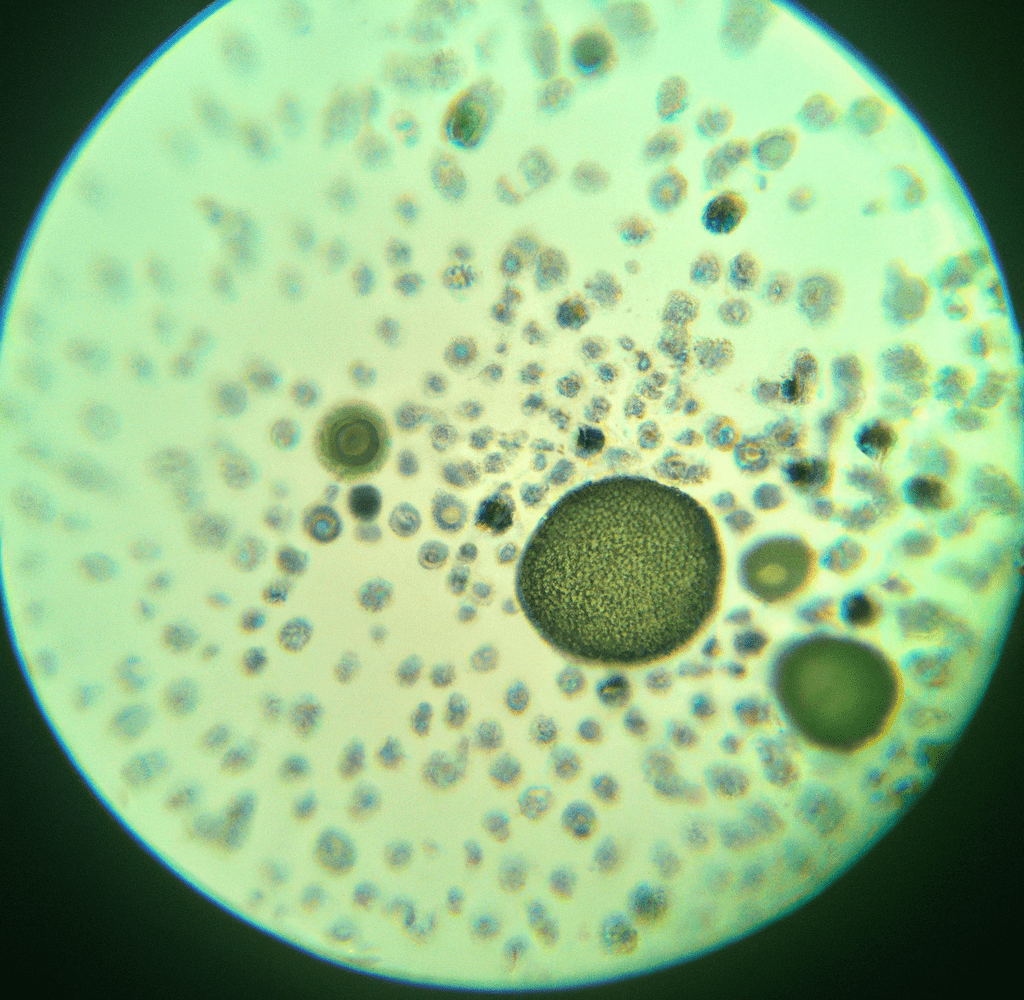
Applying micronutrient fertilizers to crops can help agriculture overcome micronutrient deficiencies and increase crop health and production. For sustained agricultural output and to guarantee the supply of wholesome food for a growing population, proper micronutrient management is crucial.
Role in Photosynthesis
As you learn about the role of micronutrients in fertilization you’ll hear about photosynthesis, a crucial mechanism in plants that involves converting light energy into chemical energy. Plants need specific micronutrients like zinc, manganese, and others in addition to the basic macronutrients like carbon, hydrogen, and oxygen to ensure optimum growth and the highest crop output.
Because it aids in the creation of chlorophyll, which is in charge of absorbing light energy and converting it into chemical energy, zinc is crucial to the process of photosynthesis. Additionally, zinc serves as a catalyst for a number of photosynthesis-related enzyme processes. The generation of ATP, the plant cells’ primary source of energy, and the management of light-dependent reactions are both aided by manganese. The management of the photosynthetic carbon reduction cycle involves manganese as well. Both zinc and manganese are necessary micronutrients that are vital for the growth and well-being of plants since they are involved in the process of photosynthesis.
Role in Enzyme Function
Micronutrients are important for the operation of enzymes and are involved in a wide range of biological processes. As you understand the role of micronutrients in fertilization, remember this about enzymes:
- Over 100 enzymes, including those involved in digestion, metabolism, and the immune system, are activated by zinc.
- Iron plays a part in the operation of enzymes necessary for DNA synthesis, cellular respiration, and the transfer of oxygen in the blood.
- Other micronutrients like copper, manganese, and molybdenum are crucial for the operation of enzymes.
Micronutrient levels in the growing environment in agriculture can be determined with the aid of soil and plant tissue tests, and any shortages can be filled in with the use of micronutrient fertilizers. For instance, it has been demonstrated that zinc shortage in soybean plants affects the activity of many enzymes, resulting in decreased growth and production.
Role in Hormone Regulation
A variety of elements of plant growth and development are influenced by the management of plant hormone levels, which is where the role of micronutrients in fertilization comes into play. The quantities of micronutrients necessary for the best possible plant development and health can be determined by a soil test.
For instance, zinc has a role in the production of auxins, vital growth hormones that control several elements of plant development like the growth of the shoot and the roots. Additionally, zinc aids in the regulation of other hormones including gibberellins, which control stem lengthening and flowering.
On the other hand, manganese is essential for the control of ethylene, a hormone that affects the ripening, aging, and senescence of fruit. Manganese deficiency can diminish hormone levels and have an impact on several aspects of plant growth and development. As excessive levels of micronutrients can have detrimental effects on plant development and health, it’s crucial to balance the advantages of micronutrient supplementation with the possible disadvantages of over-fertilization.
Role in Disease Resistance
The role of micronutrients in fertilization is important for disease resistance and has a big impact on growth and health:
- Zinc has been found to improve resistance to infections and disease and is important in immune system function.
- The creation of red blood cells and the transportation of oxygen are both aided by iron, and a lack can lead to anemia and lowered disease resistance.
- Other micronutrients like copper, manganese, and molybdenum also contribute significantly to disease resistance by taking part in procedures like cellular immunity and antioxidant defense.
- For optimum health and disease resistance, studies have demonstrated that appropriate micronutrient intake is crucial during fetal development, childbirth, and throughout life. Increased susceptibility to infections and other disorders can be brought on by a deficiency in key micronutrients.
Addressing micronutrient deficiencies is essential for improving health and preventing diseases since they constitute a substantial public health problem, particularly in poorer nations.
Deficiency Symptoms
Micronutrients are essential for many aspects of plant growth and development, and a lack of them can cause a variety of symptoms that can harm a crop’s health and output. When you understand the role of micronutrients in fertilization, you can look for the following systems of deficiency:
- Zinc, iron, and other common micronutrients are among those that are crucial for plants. Plants lacking enough zinc may experience slowed development, smaller leaves, fading leaves, and fewer leaves overall. Interveinal chlorosis, a disease where the leaves become yellow between the veins but the veins stay green, can arise in crops like maize when there is a zinc deficit.
- A lack of iron in plants can cause chlorosis, which causes the leaves to turn yellow, as well as restricted growth. Younger leaves frequently exhibit more prominent leaf yellowing, which begins at the tips and then spreads to the entire leaf.
Micronutrient deficiencies can be avoided and ideal plant development and health can be achieved with the help of proper soil testing, fertilization, and management.
Effects of Deficiency on Plant Growth and Yield
The growth and development of plants depend heavily on micronutrients like zinc, phosphorus, and others, and their lack can have a big impact on plant growth and production. A lack of zinc in plants can cause stunted growth, smaller leaves, and poorer root development, all of which lower crop output. A lack of zinc can lead to decreased protein synthesis and reduced cell division, both of which can have an impact on the development and productivity of crops. Zinc is also involved in a number of cellular functions, including cell division and protein synthesis.
Another vital element is phosphorus, which is crucial for the energy metabolism of plants. A lack of phosphorus can cause stunted plant development, decreased crop output, and diminished root growth. A lack of phosphorus can lead to decreased cell division and diminished DNA synthesis, which can have an impact on the development and production of crops. Phosphorus is also involved in a number of biological functions, including DNA synthesis and cell division. As you can see, the role of micronutrients in fertilization is important for plant nutrition and overall health.
Fertilization Techniques
Modern agriculture relies heavily on fertilization to increase crop yields and quality. Zinc and copper are two micronutrients that can significantly affect the health and productivity of plants when applied in a balanced manner. These micronutrients are essential for a number of physiological functions, including respiration, photosynthesis, and enzyme activation.
To give crops the necessary quantity of micronutrients, a variety of fertilization methods can be utilized, including soil application, foliar spraying, and hydroponic systems. The type of crop, the soil, and the growing environment all influence the technique selected. Crop growth, yields, and production quality can all be increased with enough micronutrient fertilization.
In order to maintain the proper balance and prevent over- or under-fertilization, it is crucial to constantly check the levels of micronutrients in the soil and plants. The micronutrient requirements of the crop can be ascertained and fertilization techniques can be directed by a soil analysis and a plant tissue analysis.
Soil Application
For crops to thrive at their best, critical micronutrients like zinc and manganese are applied to the soil. Lack of certain micronutrients can cause stunted growth, reduced yields, and lower-quality produce because they are essential to the growth and development of crops. Farmers may guarantee that their crops have access to the appropriate nutrients at the appropriate time by adding micronutrients directly to the soil. Higher agricultural yields and higher-quality produce can result from learning about the role of micronutrients in fertilization.
Foliar Application
Bypassing the soil, foliar spraying is a technique for supplying micronutrients to plants’ leaves. This can help to address nutrient deficits that may result from unhealthy soil or unbalanced fertilization. Zinc and iron are two micronutrients that are frequently applied topically and are crucial for wholesome plant growth and development.
It’s advised to test the soil to identify any specific nutrient deficits before applying foliar fertilizer. This will make it possible to apply the proper micronutrient precisely and can help prevent overapplication, which might harm the plants. For instance, iron deficiency chlorosis, a frequent problem in soybean crops, can be resolved by using iron chelates topically. The overall well-being and crop output of the soybean plants can be enhanced by this.
To get the best effects and prevent any injury to the plants, it’s crucial to adhere to the suggested foliar treatment instructions, which include the right concentration, timing, and frequency of application.
Combination of Both
In order to give the nutrients required for optimum crop growth, a mix of foliar spraying and soil application can be employed for the greatest results. Conducting soil testing to ascertain the current nutrient levels in the soil is necessary before establishing a nutrient management plan.
The required nutrients can be calculated based on the findings of the soil testing, and the farmer can choose the ideal mix of soil application and foliar spraying to give those nutrients. With this strategy, you can make sure that the crops get the proper nutrients at the right time, which will promote better growth, greater yields, and higher-quality produce.
Bottom Line: The Role of Micronutrients in Fertilization
It is impossible to exaggerate the role of micronutrients in fertilization. Micronutrient levels in the body must be sufficient for proper fetal development and pregnancy. Numerous studies have demonstrated the critical function that micronutrients perform in the growth and development of crops as well as the significance of foliar and soil applications in supplying these nutrients. Now that you know more about the subject, you can make better choices for your plants!
FAQs on The Role of Micronutrients in Fertilization
How do micronutrients affect fertilization?
For crops to grow and have the ability to produce a large harvest, micronutrients play a crucial role in fertilization. In comparison to macronutrients, they are required at lower concentrations, yet despite this, they are essential for cell health and function, soil health, crop development and yield, and overall health in both humans and animals.
What types of micronutrients are there?
Boron, copper, iron, manganese, molybdenum, and zinc are a few examples of essential micronutrients.
What function does boron serve in fertilization?
Plants require boron for healthy cell walls and root systems, as well as for growth and development. It should be incorporated into a micronutrient management approach because it is regularly applied to crops via foliar and soil spraying.
What function does copper serve in fertilization?
A crucial micronutrient for plant growth, copper is involved in processes like energy production, chlorophyll implantation, and the prevention of oxidative damage. Copper levels in the soil should be checked, and the soil should be changed if necessary by fertilizer or foliar treatments. Additionally beneficial to human health is copper.
What part does iron play in fertilization?
Another key micronutrient that is vital for the development and growth of crops is iron. Lack of iron can result in reduced yields, stunted growth, and lower-quality produce. A micronutrient management plan should consider iron because crops are routinely treated with iron by foliar and soil spraying.
What function does manganese have during fertilization?
Manganese is necessary for various physiological processes as well as plant growth and development. It is still only required in extremely small amounts, despite the fact that it is frequently required in relative bigger proportions than other micronutrients. Lack of manganese can result in stunted development, lower yields, and yellowing of the leaves. Manganese levels in the soil should be assessed, and any necessary adjustments should be made with fertilizer or foliar spray.
What function does molybdenum serve during fertilization?
Molybdenum is vital for nitrogen-fixing as well as for the growth and nitrogen metabolism of plants. Although only extremely small levels are required, a lack of it might result in stunted development and lower yields.
How do micronutrients affect the way enzymes work?
The functioning of enzymes required for numerous biological activities, including DNA synthesis, cellular respiration, digestion, metabolism, and immune system function, depends on micronutrients like zinc, iron, and others.
What impact do micronutrients have on how plants regulate their hormones?
While manganese is necessary for the regulation of ethylene levels, zinc plays a function in the formation of auxins, significant growth hormones that regulate numerous aspects of plant development. Soil testing can be used to evaluate the micronutrient levels in the growing environment, and micronutrient fertilizers can be used to make up any deficiencies.
How do micronutrients contribute to disease resistance?
Through mechanisms including cellular immunity and antioxidant defense, micronutrients such as zinc, iron, and others help people avoid disease. It is essential to consume enough micronutrients for optimum health and disease resistance. In particular in impoverished countries, addressing micronutrient deficiencies is crucial for enhancing health and preventing illnesses.


